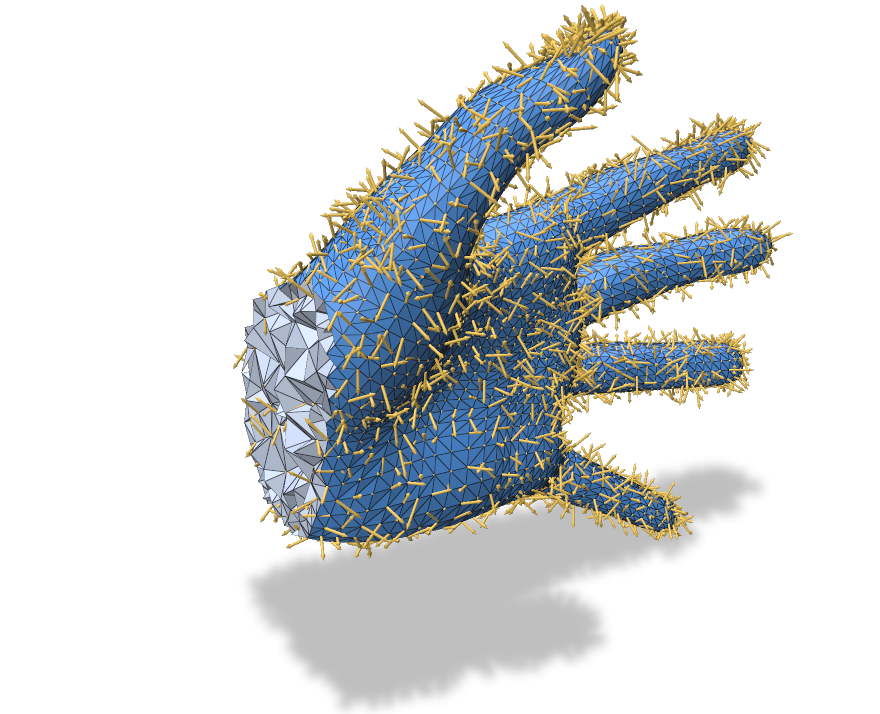Vector Quantities
Visualize vector-valued data at the elements of a volume mesh.

Example: showing vectors on vertices (here random vectors)
# ... initialization, create mesh ...
ps_vol = ps.register_volume_mesh("test volume mesh", verts, tets=tets)
n_vert = verts.shape[0]
n_cell = tets.shape[0]
# Add vectors on vertices (with some options set)
vecs = np.random.rand(n_vert, 3)
ps_vol.add_vector("my color", vecs, enabled=True, vectortype='ambient')
# Show the GUI
ps.show()
Add vectors to elements
VolumeMesh.add_vector_quantity(name, values, defined_on='vertices', enabled=None, vectortype="standard", length=None, radius=None, color=None)
Add a vector quantity to the mesh.
namestring, a name for the quantityvaluesanNx3numpy array, vectors at vertices/cellsdefined_onstring, one ofverticesorcells, is this data a vector per-vertex or a vector per-cell?
This function also accepts optional keyword arguments listed below, which customize the appearance and behavior of the quantity.
Vector Quantity Options
When adding a vector quantity, the following keyword options can be set. These are available for all kinds of vector quantities on all structures.
Keyword arguments:
enabledboolean, whether the quantity is initially enabled (Default:false)vectortype, one of"standard"or"ambient". Ambient vectors don’t get auto-scaled, and thus are good for representing values in absolute 3D world coordinates. (Default:"standard")lengthfloat, a (relative) length for the vectorsradiusfloat, a (relative) radius for the vectorscolor3-tuple, color for the vectors
If not specified, these optional parameters will assume a reasonable default value, or a persistent value if previously set.